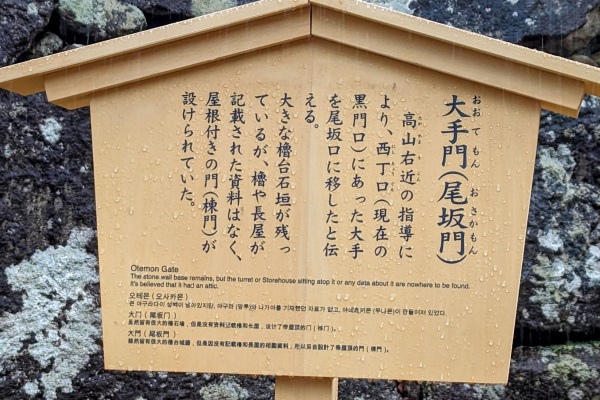Christian Samurai who served in the Kaga Clan, Ukon TAKAYAMA: Tour of Places Related to Ukon in Kanazawa
Ukon TAKAYAMA spent approximately 26 years in the Kaga Domain from 1588 to 1614, and his life and achievements are deeply engraved in Kanazawa and other regions. Throughout the city, there are various spots where you can trace Ukon’s legacy. Visitors can learn about the period he spent and his achievements while touring such tourist attractions as Omicho Market, Kanazawa Castle, 21st Century Museum of Contemporary Art, Kanazawa, and Kenrokuen Garden. After entering the service of the Kaga Clan, Ukon played a significant role in the development of Kanazawa, including his involvement in the restoration of Kanazawa Castle and the promotion of the tea ceremony culture. By exploring these landmarks, visitors can gain a deeper understanding of the historical context and Ukon’s lasting impact on the region.
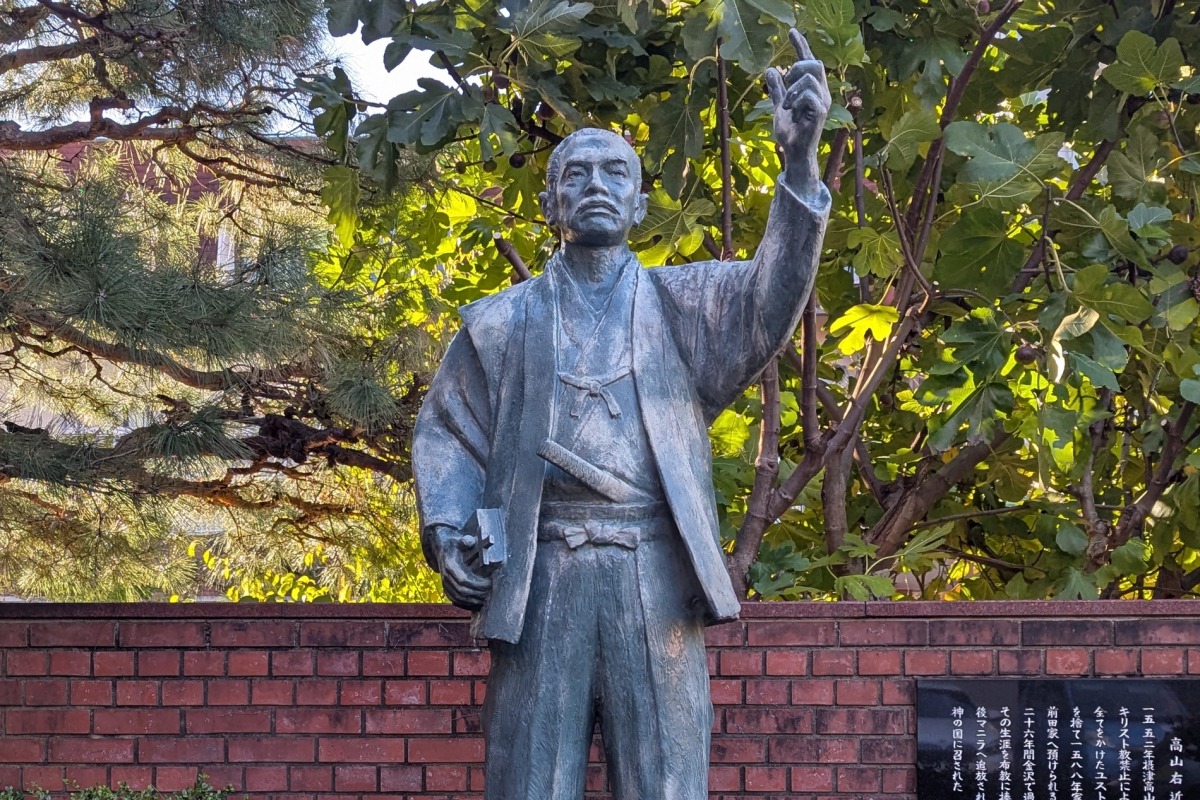
Kanazawa Station
The "Motenashi Dome" at the Kenrokuen exit of Kanazawa Station was designed with the concept of "hospitality," symbolizing offering an umbrella to travelers arriving at the station in a region known for its frequent rain and snow. Visitors are welcomed by the geometric-patterned glass ceiling.
A popular photo spot is the majestic "Tsuzumi-mon" Gate, inspired by the tsuzumi drums used in Kanazawa's traditional Noh theater. Standing at 13.7 meters tall, the grand structure, supported by two sturdy pillars, is truly impressive. Many tourists stop here first to take commemorative photos. Kanazawa Station is even recognized as one of the 14 most beautiful stations in the world.
From sunset to midnight, the is "Tsuzumi-mon" Gate lluminated. Every hour, on the hour, for 2 minutes, it lights up in colors representing the five traditional Kaga colors (crimson, indigo, grass green, ocher, and ancient purple), with different colors showcased each weekday (Monday: crimson, Tuesday: indigo, Wednesday: grass green, Thursday: ocher, Friday: ancient purple). On weekends and holidays, all five colors are displayed for 2 minutes each. Be sure to visit during nighttime to enjoy the magical lighting!
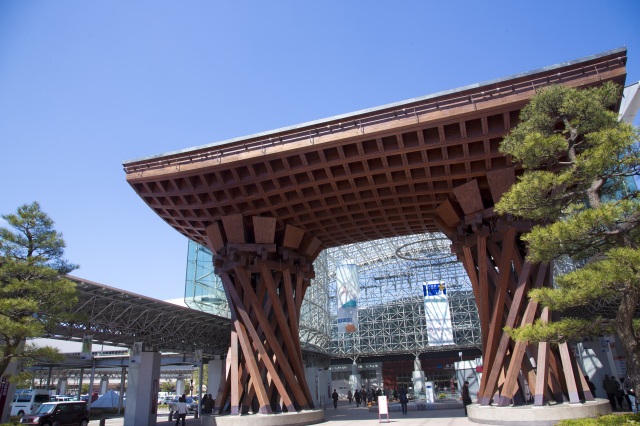
Christian Missionary Residences on the Base of Jin’emon-Zaka Slope
It is believed that the residence of the missionaries was located around the bottom of Jinyemon-zaka, which connects the west side of Kanazawa Castle to the castle town. This area is thought to have been a gathering place for Christian samurai and Kaga clan retainers, such as Naitō Joan and Ukita Kyūkan, who came to Kanazawa seeking Ukon’s protection.
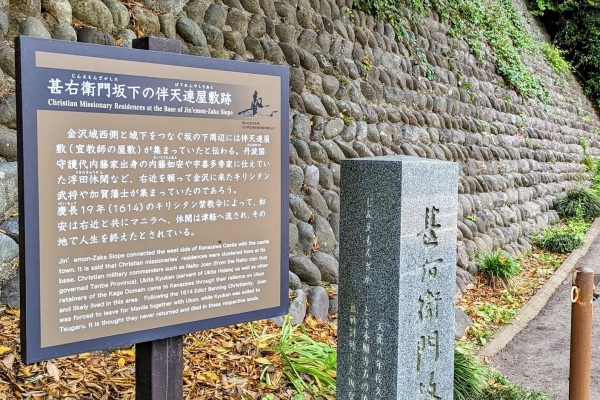
Kanazawa Catholic Church
You can view a statue of Ukon Takayama, stained glass depicting Ukon Takayama, Garasha Hosokawa, and others, Ukon’s holy relics, a censer believed to have been used by Ukon, as well as statues of the Madonna and Child and the Virgin Mary.
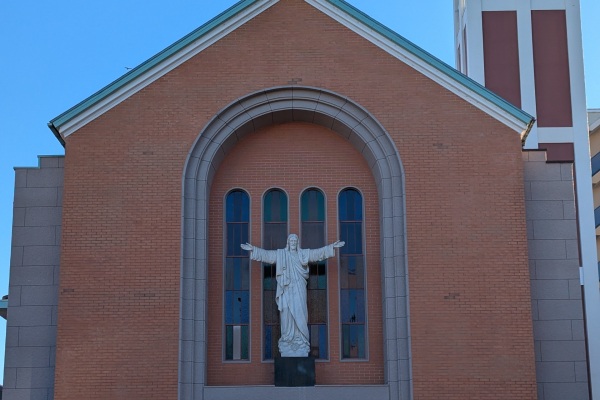
The Remains of Kunai-bashi-zume (at the foot of Kunai Bridge)
The "Kanazawa Castle So-gamae (Outer Moat and Ramparts) Site" consists of a double-layered moat and earthen embankments that encircle the castle town, constructed around 1599. While historical records indicate that both the inner and outer sections were created under Ukon Takayama's supervision, later accounts suggest that Ukon was responsible for the inner So-gamae, while the outer section was constructed by the influential Kaga clan vassal, the Shinohara family.
Some remains of the So-gamae are still visible within Kanazawa city. One such site, the "Kunai-bashi-zume Remains," can be seen next to the 21st Century Museum of Contemporary Art. Here, you can view large Zelkova trees that stand alongside the earthen embankments. A fence extends from the neighboring land beside the museum, offering the only spot where you can imagine the atmosphere of the moat over a long stretch.
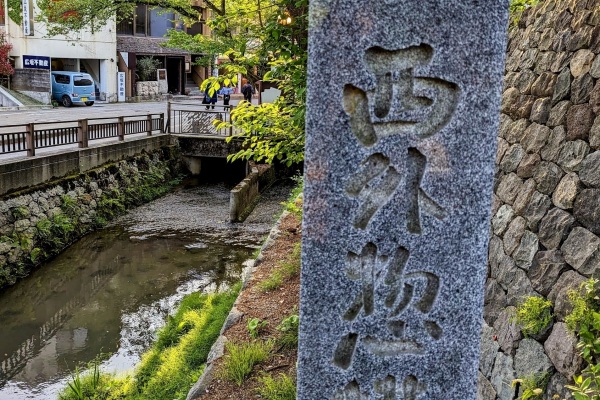
Kanazawa Nakamura Memorial Museum
The Nakamura family, who has been running a sake brewery in Kanazawa, moved and modified their own residence here, exhibited and opened their collection to public. Later, the museum was donated to Kanazawa City. Centering on noted articles of Japanese tea ceremony arts, the museum exhibits calligraphic works, paintings, lacquer ware, and pottery. There are a number of two or more Japanese tearooms used for tea ceremonies.
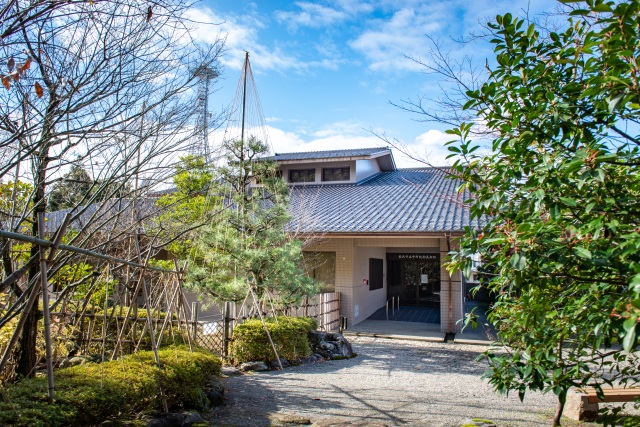
The Site of Ukon Takayama's Residence
The site of Ukon Takayama's residence later became the land for the Honda family's upper residence, as noted in the historical records of Daijōji Temple. This area corresponds to the vicinity of the current Ishikawa Prefectural Museum of Art. There is also a theory suggesting that it may have been located within the grounds of the 21st Century Museum of Contemporary Art in Kanazawa.
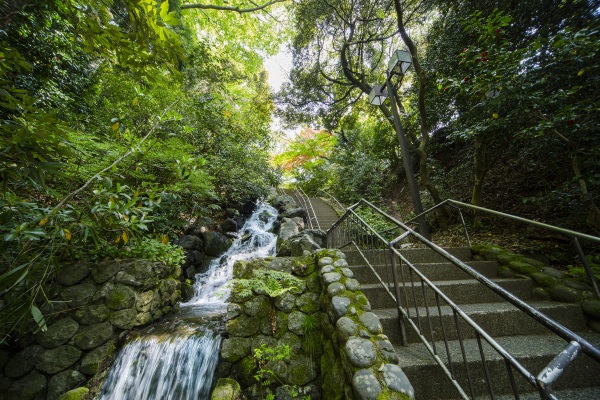
Kirishitan-ji Temple
It is also known as “Nanban-ji Temple” in reference to the Christian church. It is mentioned in an Edo period illustrated map as “Kirishitan Yashiki” (Kirishitan Residence), which indicates that Kirishitan Temple was originally located there. It is located adjacent to Konyazaka, next to the present Kenrokuen Garden.
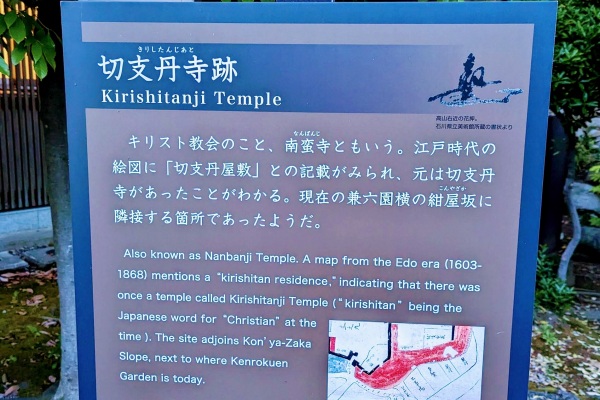
Kanazawa Castle
Kanazawa Castle, originally established as the Kanazawa Mido by Honganji and later developed into a fortress by Morimasa Sakuma, was further refined by the Maeda family. The design of features such as the Shinmaru (New Keep) and the Ote-mon (Main Gate) is attributed to Ukon Takayama. Additionally, the architectural design of Kanazawa Castle bears similarities to the Namban-ji temples in Kyoto, which has led to speculation about Ukon’s involvement in the castle’s design.
